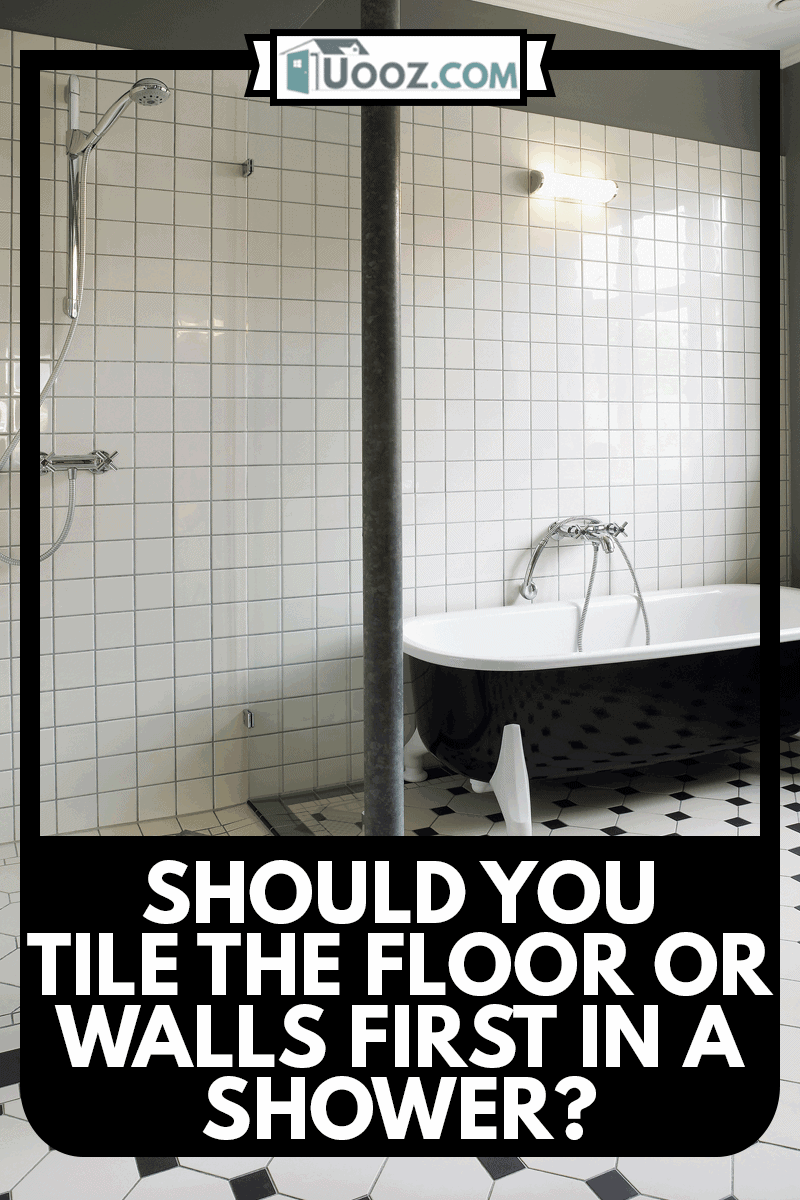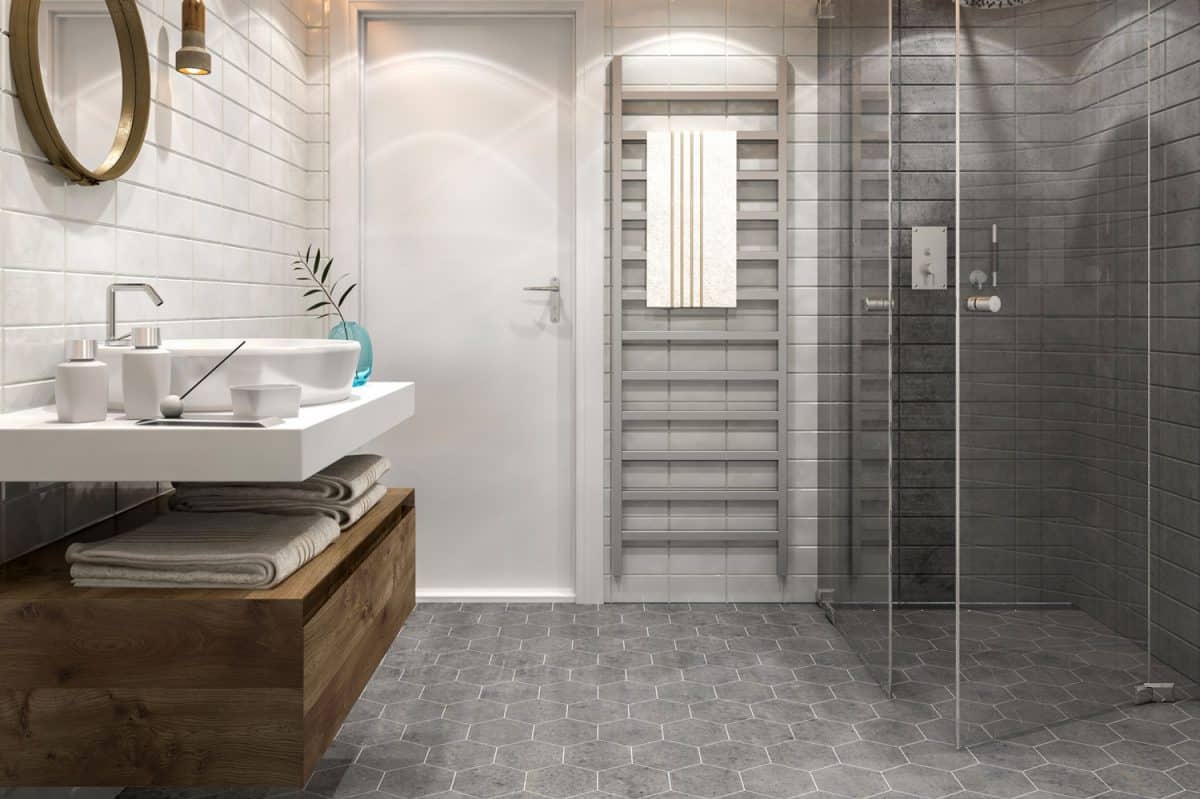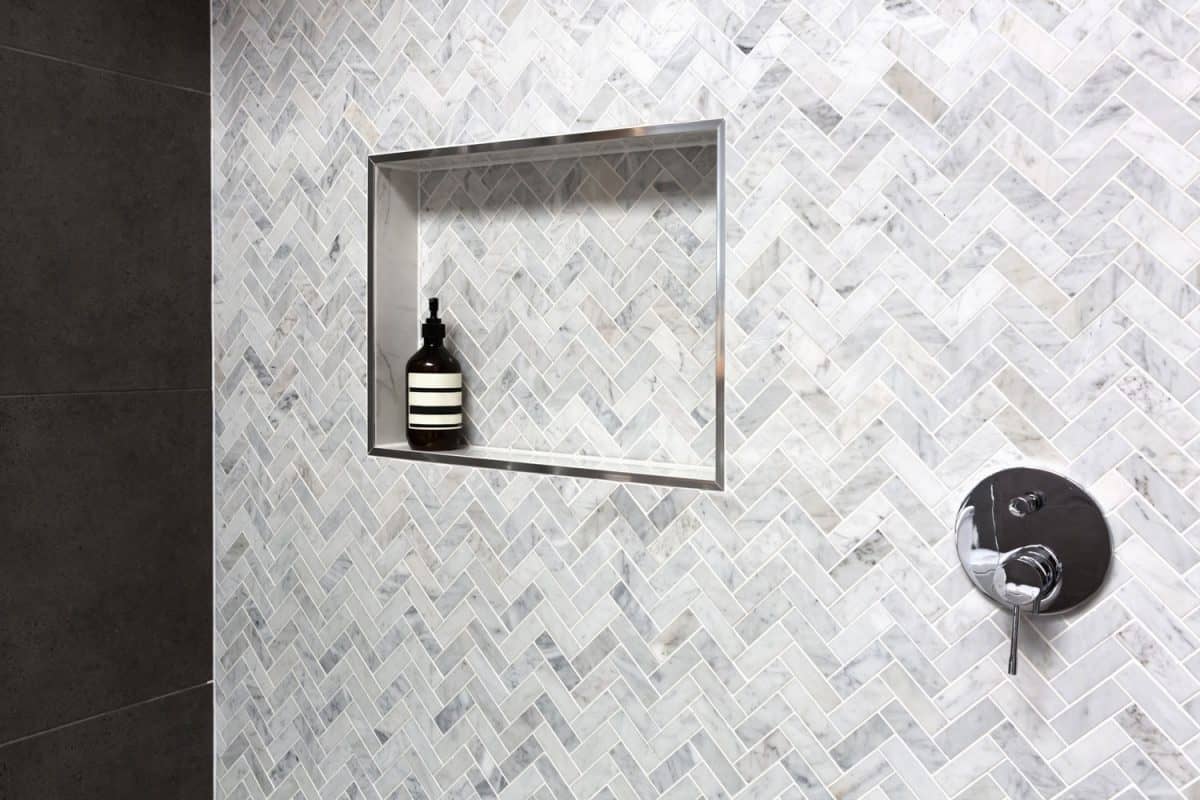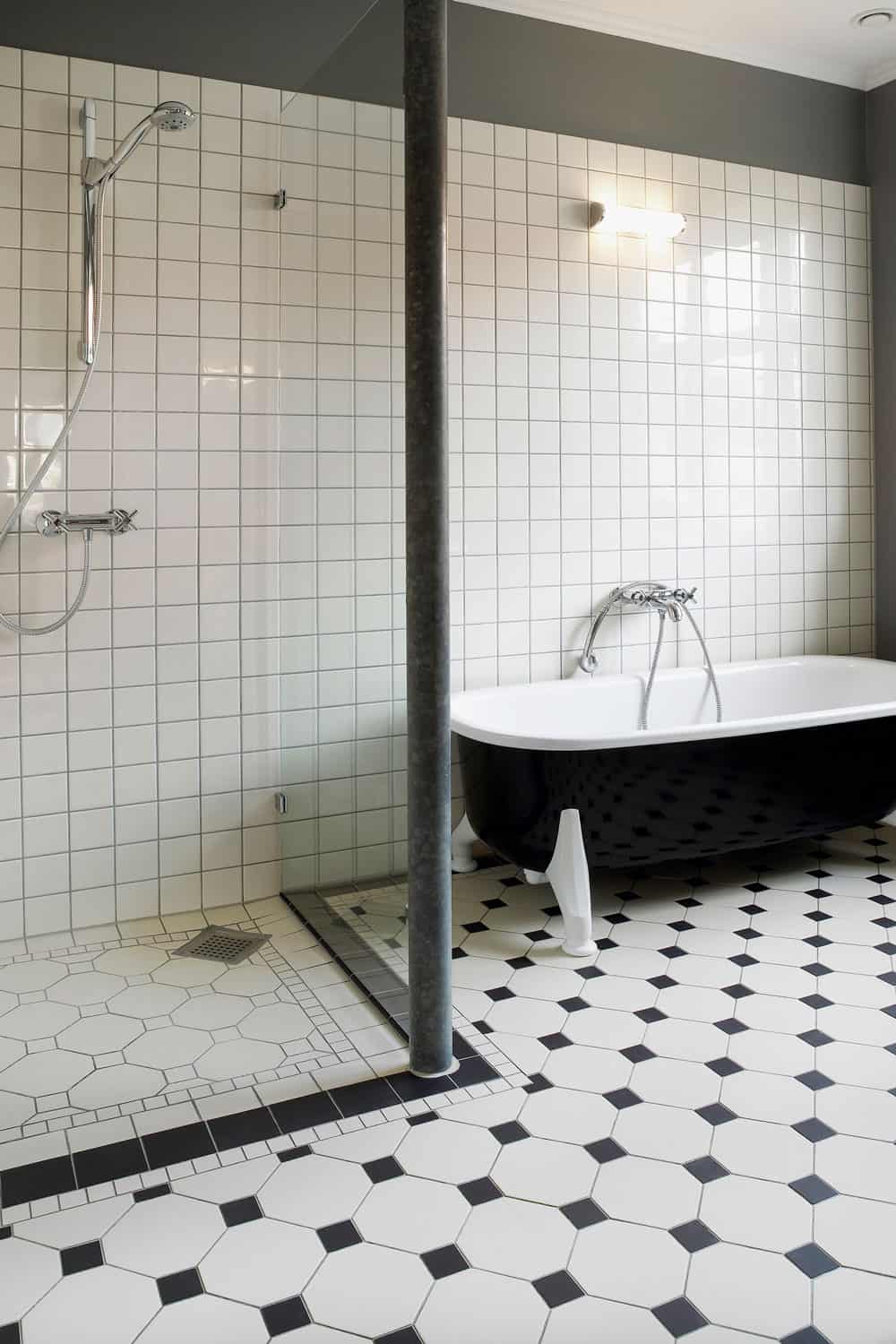Are you tiling the bathroom and wondering whether you should start tiling the floor or wall first in the shower? You’ve come to the right place! It is important to plan when you embark on complicated home improvement projects. The truth is that there is no single right way to tell whether you should tile the floors or the walls first. There are numerous reasons you may choose to do either.
Installing wall tiles first:
- If you install the floor tiles first, you will have to wait for them to dry and firm before working on the walls. Save time by installing wall tiles first.
- Just use a ledger or space saver to leave room to slide in floor tiles.
- Mortar and grout might fall on the floor tiles if you install them before the wall tiles.
Installing floor tiles first:
- Save yourself from calculations and extra preparations.
- If you have time to spare, this is the easier option.
Although there is no particular set way to tile the shower, there are certain factors according to your individual needs and project that will make the answer to this question clearer. Let’s look at these points in greater detail. This way, you will know the advantages and disadvantages of each option. For more information, keep reading ahead.

What Order Do You Tile A Shower?
Here are the advantages of installing wall tiles first in a shower:
Reducing Damage
Mortar and grout are likely to fall on the floor when you tile the walls first. This mortar and grout can become extremely stubborn and difficult to remove if it gets time to cure. If you install the wall tiles first, you won’t have to be extra careful when applying the mortar and grout and can work stress-free.
Additionally, if the floor tiles are not completely firm and set in the mortar, and the grout did not cure yet, the floor tiles are likely to loosen or crack. Thus, you won’t have to worry about damaging the floor tiles in your shower if you install the shower tiles first!
Saving Time
Save time by installing the wall tiles first. This process will cut down the curing period that the floor tiles will otherwise require. You will not have to set the wall tiles and dry them entirely. You can quickly start installing the floor tiles immediately soon after you finish with the wall tiles. Therefore if you want to avoid a mess, going with wall tiles first is the best choice.

Here are the advantages of installing floor tiles first in a shower:
Easier Option
You can mount wall tiles over the floor tiles. It is harder to use ledgers and space savers for the floor tiles to slide in and fit under the wall tiles. For a process that requires less effort, install the floor tiles first. Once the grout and mortar cure, you can install the wall tiles.
Correct Order
If you mount the floor tiles over the wall tiles, this will cause significant issues both practically and look-wise. If you install wall tiles first, waterproofing will become harder. The water will seep into the floor from the edges where the wall and floor tiles meet. This process can cause significant damage to the entire shower structure.
Looks And Practicality
You might need to use extra grout in case of miscalculations during wall tile installation. It will look unsightly. Besides, this method only works if you have level flooring. You will have to cut the lowest row of wall tiles if the flooring is not level.
This process will require more effort if you install the wall tiles first. The finishing of the shower will also be unpleasing to the eye.
Is It Possible To Combine Both Approaches?
There is a way in which you can reap the benefits of both the methods mentioned above. It requires technical knowledge. However, if you familiarize yourself with the concept, it can be the most time-efficient and effective method. Here’s how to go about the hybrid method:
- Install the second row of wall tiles first. This process will require some extra care and a lot of cross-checking using a level.
- Continue installing the upper rows of tiles on the wall until you reach the desired height of tiling.
- Install the floor tiles to the wall.
- Install the lowest row of wall tiles to finish.
Do I Need To Waterproof Shower Walls Before Tiling?
Showers need to be treated with waterproofing membranes before you can tile them. Otherwise, the moisture will seep into the walls through the gaps in grout and mortar and cause the tiles to loosen and eventually fall out. You can use sealants and battens to waterproof bathrooms. But, more advanced waterproofing adhesives for tiles are now available.
There are numerous methods of waterproofing shower walls before the tile installation process. Do thorough research and read reviews of waterproofing products available online and in your local hardware stores. Use the method that seems easiest, most cost-efficient, and most time-efficient to you.
Do You Tile Before Fitting A Shower?
Fittings should be fitted and placed over the tiles, not just cut around them. Fit the trays and install the shower later, after you finish tiling the walls. This process is a cleaner method and will preserve the looks of the outcome.
If you fit the shower before you tile the walls, not only will it prove to be a hindrance while you work, but it will also make the tile installation process far more complicated. It is easier to trim tiles according to your needs than to work around a protruding shower head.
How Do You Install Tile On A Shower Wall?

Surfaces are rarely entirely level. You will probably have to cut a few tiles at angles to get the first set of tiles at the same level. This way, the higher levels can be aligned. We will go over a quick rundown of how to install tile on a shower wall.
Determine The Focal Point
First, stand back and look at the walls to determine the most visible areas. It will usually be the center of any wall. Measure the wall and find its focal point. The more accurate the markings are, the more of a finished look they will produce. You can use chalk for these markings since it works well on concrete.
The main objective is to install full-field tiles in the focal areas. You can place the modified and custom cut tiles around obstacles, fixtures, or corners and edges of the wall.
Mark The Tile Placement And Layout
If you plan on installing fancy decorative tiles or a pattern, mark your layouts on the wall first. This step is essential before you begin installing the tiles. You may also want to locate the positions of any fixtures or cabinets that you plan on installing on the wall.
Start from the bottom, near the floor, and use a level to see if you will have to cut any tiles to make the first course of the bathroom tiles level. Use a level to check whether the marked lines are straight. Then, cut the tiles accordingly.
Prep The Tiles And Mortar
For a long-lasting and firm foundation, prepare the shower tiles and the mortar before installation. Pick a thin-set mortar for tiles. Thin-set mortars work well with a thin layer of the application instead of a thick one. This type is ideal for tiles since thick-set variants will prove difficult during installation.
Powder mortar will be the best option because you can keep the consistency according to your needs. Remember to set small amounts of mortar at a time since it tends to adjust quickly. The mortar should be the consistency of peanut butter. If it is difficult to mix such a thick paste, use a tool such as an electric drill and a mortar mixing bit to mechanize the process and save you from physical exertion.
Remember that you can always add more water, but you can’t take it out. Add less water than recommended in the instructions. If necessary, add more as you mix.
Spreading The Mortar
There are two methods of spreading the mortar, depending on the size of your tiles. In the first method, you can lay it out directly on the tile and stick them to the wall. Alternatively, spread a layer of mortar on the wall and place the tiles on it. The first method is effective when the tiles are large.
The second is more beneficial when the tiles are small. It is essential to remember to spread the mortar in a limited space. This way, it will not dry before you can place the tiles.
You can use tile spacers between the tiles and pull them out once they are in the mortar. Tile spacers help leave space for the tile grout. They are practical when working with large tiles which might move out of place due to their weight and gravity. Apply tile grout and finish up.
Final Thoughts

The rules of shower tile installation require lots of thinking. The decisions depend on personal preferences. Otherwise, you can pick a plan that makes the most sense for your situation. Think about your preferences and needs. Then the rest should fall into place!
Before you go, do you have other tile concerns? Do you want to know how to install tiles on the shower ceiling? We have the steps! For more information, check out our post here.
Additionally, do you wonder if you need to waterproof the shower ceiling? We have answers to that and more! For more information, check out our post here. Until next time!
